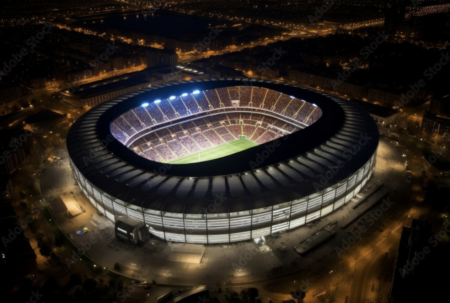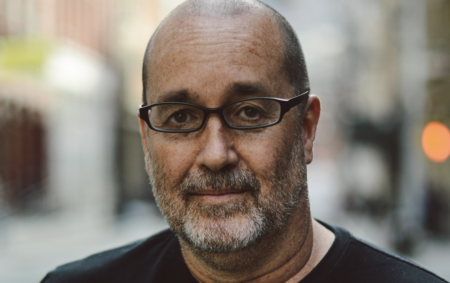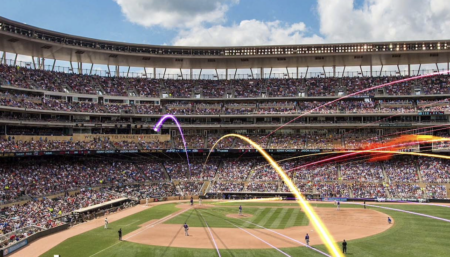In the latest installment of Stadia’s ongoing series of web-exclusive interviews with parties involved in the Mercedes-Benz Stadium project, Erleen Hatfield reveals details of BuroHappold Engineering’s role on the new venue.
What was it like collaborating with HOK on development of the roof concept?
We set up design charrettes in our office with precedents pinned to the walls, computer models on the big screen and lots of tracing paper, then talked about all kinds of ideas for the roof. The process was fun, occasionally a bit stressful, with lots of creative ideas flying around.
HOK was great to work with in that early phase and beyond. We looked at retractable roof concepts with cables, we looked at pneumatics, rotating panels and more. We coded routines using Grasshopper to model truss configurations quickly based off a surface model from HOK, so we could evaluate many schemes in a short amount of time.
Some ideas were keepers and others went in the trash. When we settled on the current scheme Bill Johnson from HOK asked me “Honestly, can you design a structure that will work,” and I replied “Absolutely.”
What were the main challenges of the stadium project and how did you tackle them?
The main challenge was to disrupt the status quo of retractable roof design and I think we accomplished that. We set out from the start to design something that would possibly become an icon for Atlanta.
We wanted to attract fans to watch games in the stadium (instead of on their couches), not by creating spectacle but by creating a great, engaging, interesting space, that people want to be in.
Were you able to draw on previous experience, or did the MB stadium require you to do things for the first time?
I drew on past sports experience, as understanding this type of long span structure is an important starting point. However, with rethinking stadium design, we had to approach the bowl, facades and roof structure in a new way to create the eight moving petals that cantilever over 200ft, the first use of single skin ETFE on the facades, the support of the almost 2,000,000 lb video halo and one of the longest two-way spanning roofs in the world. Innovation is challenging but I do think the outcome will be worth the effort.
How closely did you work with some of the other partners on the project?
We worked with Uni-Systems who did the retractable roof panel mechanization, Daktronics who did the videoboard, and the metal panel supplier Crown Corr.
How did you find these collaborations? How did you combine forces to meet this project’s specific and exacting requirements?
Having engaged partners is always a benefit to a project. Working with Daktronics, Uni and Crown Corr, to name a few, allowed for better, more useful coordination.
Which aspect of your involvement in the stadium project are you personally most proud of?
I am most proud of my team of structural engineers at BuroHappold who delivered this complex, innovative and amazing stadium.
September 20, 2017




